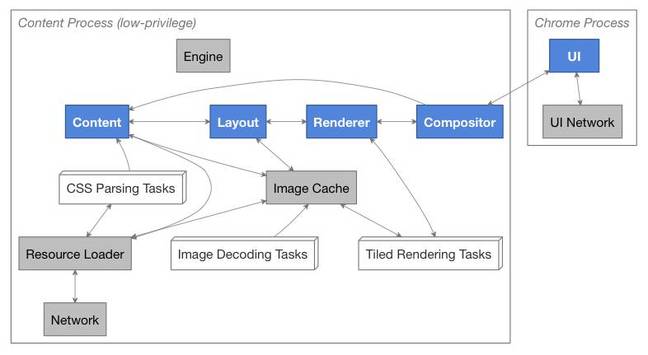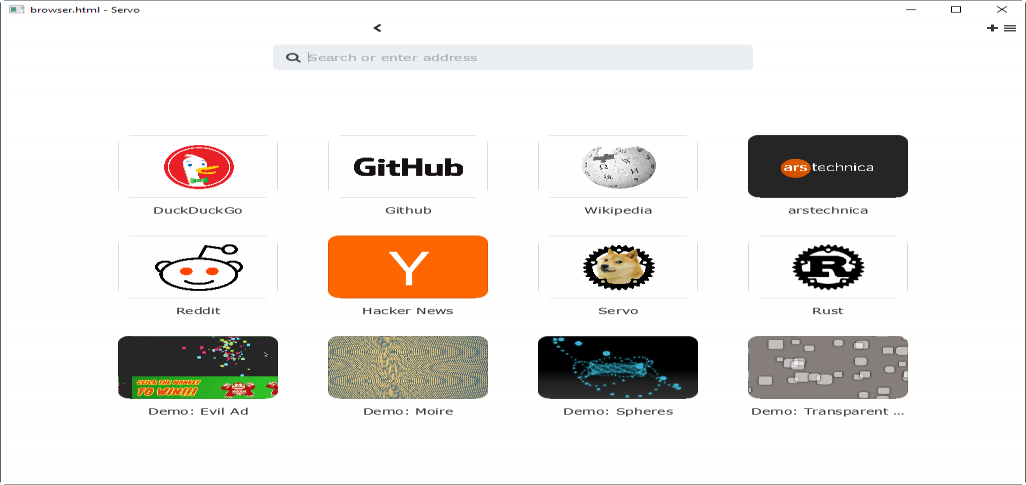- Although the implementation in Servo is heavily based on the Firefox implementation, Rust has some features that make the Servo implementation a lot nicer than the Firefox implementation, which is written in C. This blog post is a deep dive that explains how and why. Measuring data structures in Firefox.
- Mozilla previously laid off 70 employees in January. Several sources have told ZDNet that the recent layoffs accounted for nearly a quarter of the organization's workforce. Main casualties of.

Servo is a browser engine being developed for application and embedded use. In August 2020, during the COVID-19 pandemic, due to lack of funds and organization restructuring, Mozilla laid off most of the Servo development team. The team was disbanded.

| Original author(s) | Mozilla Corporation |
|---|---|
| Developer(s) | volunteers[1] |
| Repository | https://github.com/servo/servo |
| Written in | Rust |
| Operating system | Cross-platform |
| Type | Browser engine |
| License | MPL 2.0[2] |
| Website | servo.org |

Servo is an experimental browser engine designed to take advantage of the memory safety properties and concurrency features of the Rust programming language. It seeks to create a highly parallel environment, in which rendering, layout, HTML parsing, image decoding, and other engine components are handled by fine-grained, isolated tasks.[3][4] It also makes use of GPU acceleration to render web pages quickly and smoothly.[5][6]
Servo has always been a research project. It began at the Mozilla Corporation in 2012, and its employees did the bulk of the work until 2020.[7] This included the Quantum project, when portions of Servo were incorporated into the Gecko engine of Firefox.[8][9]

After Mozilla laid off all Servo developers in 2020,[7] governance of the project was transferred to the Linux Foundation, and development work is now done by volunteers.[1]
History[edit]
Development of Servo began at the Mozilla Corporation in 2012.[10][11] The project was named after Tom Servo, a robot from the television show Mystery Science Theater 3000.[12]
In 2013, Mozilla announced that Samsung was collaborating on the project.[13] Samsung's main contribution was porting Servo to Android and ARM processors.[14] A Samsung developer also attempted to re-implement the Chromium Embedded Framework API in Servo,[15] but it never reached fruition and the code was eventually removed.[16]
The Acid2 test was passed in 2014,[3] and Servo could render some websites faster than the Gecko engine of Firefox.[17] By 2016, the engine had been further optimized.[18] The same year, Mozilla began the Quantum project, which incorporated stable portions of Servo into Gecko.[8][9]
Servo was the engine of two augmented reality browsers. The first was for a Magic Leap headset in 2018.[19] Then the Firefox Reality browser was released in 2020.[20] Free photoshop for mac.
In August 2020, Mozilla laid off many employees, including the Servo team, to 'adapt its finances to a post-COVID-19 world and re-focus the organization on new commercial services'.[7] Governance of the Servo project was thus transferred to the Linux Foundation in November 2020.[1] Development work continues, now by volunteers, at the same GitHub repository.
References[edit]
- ^ abc'Servo's new home'. blog.servo.org. Retrieved 17 November 2020.
- ^'servo/LICENSE'. GitHub. Retrieved 5 December 2018.
- ^ abMoffitt, Jack (17 April 2014). 'Another Big Milestone for Servo—Acid2'. Retrieved 26 November 2015.
- ^'Servo Continues Pushing Forward'. 1 May 2015. Retrieved 26 November 2015.
- ^Bergstrom, Lars. 'Mozilla's Project Quantum and Servo'. mozilla.dev.servo - Google Groups. Retrieved 9 November 2016.
- ^Clark, Lin (10 October 2017). 'The whole web at maximum FPS: How WebRender gets rid of jank'. Mozilla Hacks – the Web developer blog. Retrieved 22 October 2017.
- ^ abc'Mozilla lays off 250 employees while it refocuses on commercial products'. 11 August 2020. Retrieved 17 August 2020.
- ^ ab'Quantum'. Mozilla Wiki. Retrieved 20 April 2017.
- ^ ab'Servo engines written in Rust deliver memory safety and multithreading'. Mozilla Research. Retrieved 5 July 2020.
- ^'initial add · servo/servo@ce30d45'.
- ^'Add some stubs and a makefile · servo/servo@783455f'.
- ^Eich, Brendan (13 October 2012). 'Add a new UI crate'. Retrieved 2 April 2014.
- ^'Mozilla and Samsung Collaborate on Next Generation Web Browser Engine'.
- ^'Samsung teams up with Mozilla to build browser engine for multicore machines'. Ars Technica. 3 April 2013. Retrieved 24 October 2014.
- ^Blumenkrantz, Mike; Bergstrom, Lars (13 May 2015). 'Servo: The Embeddable Browser Engine - Samsung Open Source Group Blog'. Samsung Open Source Group Blog. Archived from the original on 13 May 2015. Retrieved 28 October 2016.
- ^Dropping CEF support?, retrieved 7 November 2018
- ^Larabel, Michael (9 November 2014). 'Mozilla's Servo Engine Is Crazy Fast Compared To Gecko'. Phoronix. Retrieved 21 April 2021.
- ^Larabel, Michael (8 March 2016). 'Mozilla's Servo Is Whooping The Other Browsers In Performance'. Phoronix. Retrieved 21 April 2021.
- ^'A new browser for Magic Leap'. 3 December 2018. Retrieved 20 May 2019.
- ^'Firefox Reality for HoloLens 2'. 21 May 2020. Retrieved 17 July 2020.

External links[edit]
| Wikimedia Commons has media related to Servo (layout engine). |
Mozilla Servo Status
- Official website
Mozilla Servo 2020
